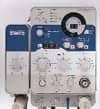Grantees of the National Institute of Allergy and Infectious Diseases (NIAID), part of the National Institutes of Health, have adapted a rapid and accurate new molecular typing strategy and used it to conduct one of the United States’ most comprehensive studies of adenoviruses, a common cause of respiratory illnesses.
The new gene sequencing strategy, first developed by researchers at the U.S. Centers for Disease Control and Prevention, identifies the adenovirus type in two days compared with the previous method that took weeks.
The method’s speed will help public health officials better understand adenovirus outbreaks in communities such as hospitals and long-term care facilities. The approach also will help clinicians know what type is causing the infection in order to use the appropriate antiviral treatment.
Findings by the team led by Gregory Gray, MD, of the University of Iowa, include:
* The distribution of adenovirus types varies by patient age, disease state, and geographical location.
* Adenovirus type 21 infections, which may cause more disease, have become more common.
* Fifty percent of the clinical adenovirus isolates among civilians were associated with hospitalization, about 20% with a chronic disease condition, 11% with bone marrow or solid organ transplantation, and 4% with a cancer diagnosis.
* Children under seven years of age, people with an underlying chronic disease, and those with recent organ transplantation are at greater risk of adenovirus infection and disease.
* A relatively high number of transplantation patients were found to have infections with multiple adenovirus isolates over time.
Researchers say quickly recognizing the adenovirus type is key to starting the appropriate antiviral therapy, controlling outbreaks and understanding the association of adenoviruses with a number of chronic disease conditions. Gray and his colleagues are using the molecular typing technique to help clinicians do just that.








